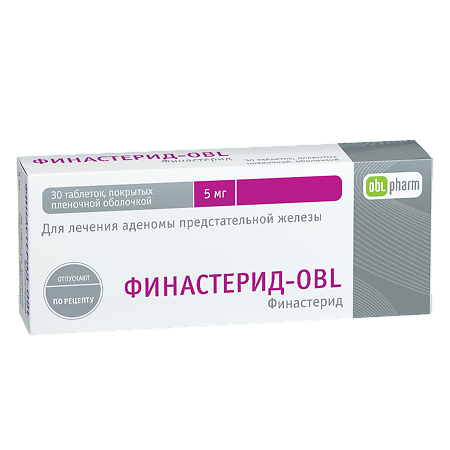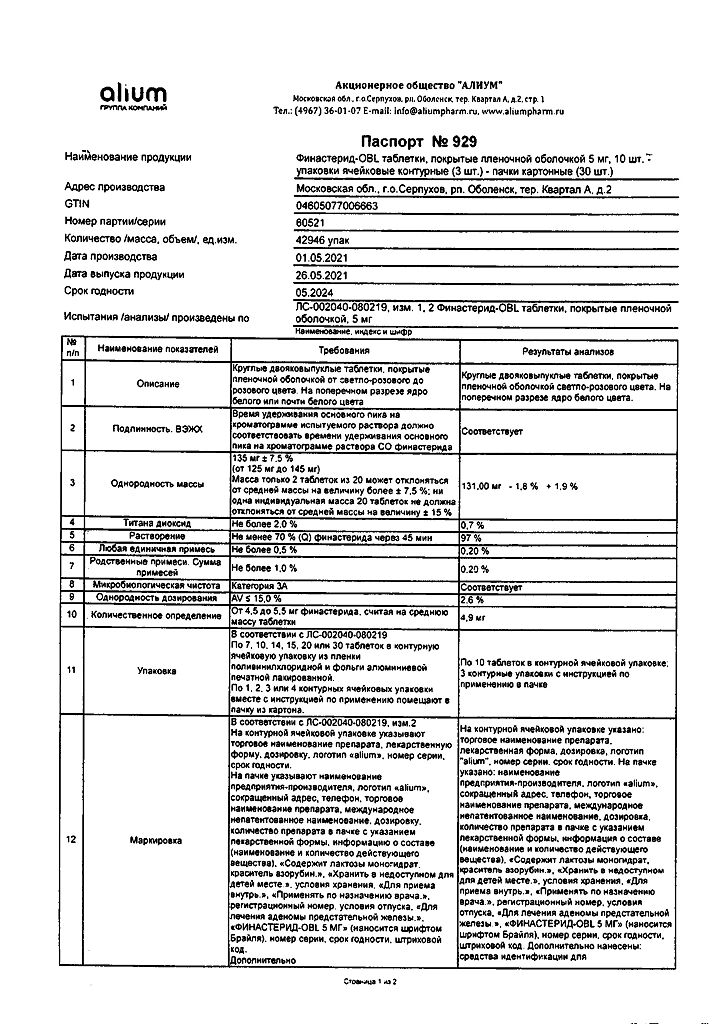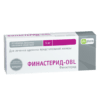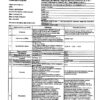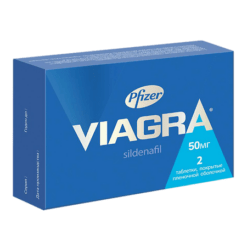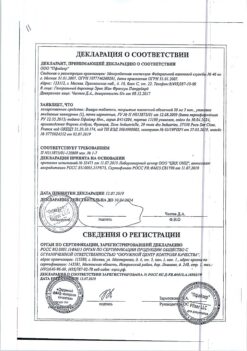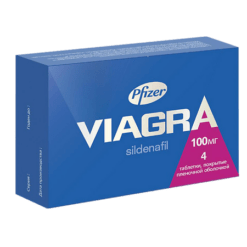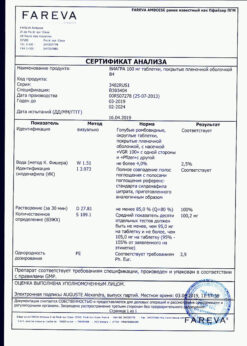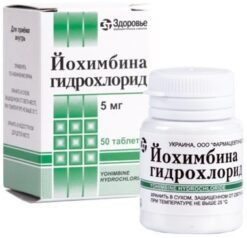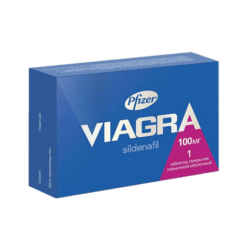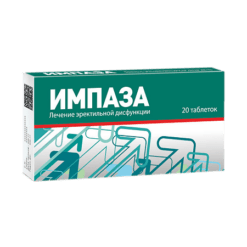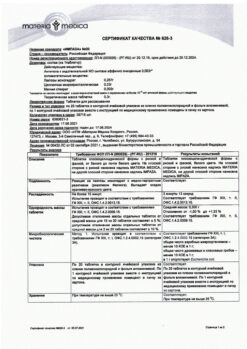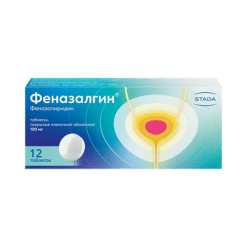No products in the cart.
Finasteride-OBL, 5 mg 30 pcs.
€8.68 €7.72
Description
Pharmacodynamics
Finasteride is a 4-azasteroid compound that selectively and competitively inhibits 5α-reductase. This nicotinamide adenine dinucleotide phosphate (NADPH)-dependent enzyme converts testosterone to dihydrotestosterone.
The drug specifically inhibits type 2 isoenzyme 5α-reductase, which leads to a significant reduction in dihydrotestosterone levels in the prostate (>90%) and circulatory system (60% to 80%).
Finasteride increases prostatic testosterone levels (by approximately 85%) in patients with BPH; it has no effect on prostate growth or morphology. The drug has no pronounced affinity for androgen receptors. Finasteride significantly reduces plasma PSA levels by 41% to 71% in patients with symptoms of BPH. However, the ratio of unbound to total PSA levels is not affected by the drug.
The size of the prostate gland decreases under the influence of finasteride due to atrophy and apoptosis. Histological changes conditioned by action of the drug were observed after 6 months from the beginning of treatment. Glandular elements of prostate tissues are the most sensitive to finasteride. The drug reduces detrusor tone in patients with urinary retention caused by BPH.
Pharmacokinetics
Finasteride is well absorbed in the gastrointestinal tract, food slows the rate of absorption but does not affect the volume of absorption. The average bioavailability of finasteride is 63% (range 34 – 71%), based on the area under the curve ratio to the intravenous control dose. The maximum plasma concentration of finasteride is 37 ng/ml (27 – 49%) and is reached within 1 – 2 hours after administration. The drug accumulates in the body with repeated multiple administrations. Establishment of equilibrium concentration occurs after 17 days, the exact time is not known.
Approximately 90% of finasteride circulates in a bound to plasma proteins. The volume of distribution of finasteride is high (76 liters in the stable state); the drug penetrates the blood-brain barrier and a small amount is found in semen. The drug may be absorbed through the skin by contact with crushed tablets.
Finasteride is metabolized primarily by the liver to form inactive metabolites. The plasma clearance of finasteride is 165 mL/min (70 -279 mL/min) and the elimination half-life is 6 hours. About 39% (32 – 46%) of the dose taken is excreted in the urine as metabolites and 57 (51 – 64%) through the intestine.
The pharmacokinetics of the drug generally does not change with increasing renal failure. The pharmacokinetics of the drug in conditions of hepatic function insufficiency have not been studied.
Indications
Indications
Treatment of benign prostatic hypertrophy.
Pharmacological effect
Pharmacological effect
Pharmacodynamics
Finasteride is a 4-azasteroid compound that selectively and competitively inhibits 5α-reductase. This nicotinamide adenine dinucleotide phosphate (NADP)-dependent enzyme converts testosterone to dihydrotestosterone.
The drug specifically inhibits isoenzyme 5α-reductase type 2, which leads to a significant decrease in the level of dihydrotestosterone in the prostate gland (>90%) and in the circulatory system (from 60% to 80%).
Finasteride increases prostate testosterone levels (by approximately 85%) in patients with BPH without affecting prostate growth or morphology. The drug does not have a pronounced affinity for androgen receptors. Finasteride significantly reduces plasma PSA levels by 41% to 71% in patients with symptomatic BPH. However, the drug does not affect the ratio of unbound and total PSA levels.
The size of the prostate gland decreases under the influence of finasteride due to atrophy and apoptosis. Histological changes caused by the action of the drug were observed 6 months after the start of treatment. The glandular elements of the prostate tissue are most sensitive to finasteride. The drug reduces detrusor tone in patients with urinary retention caused by BPH.
Pharmacokinetics
Finasteride is well absorbed from the gastrointestinal tract; food slows the rate of absorption but does not affect the amount of absorption. The average bioavailability of finasteride is 63% (range 34–71%), based on the ratio of the area under the curve to the intravenous reference dose. The maximum concentration of finasteride in plasma is 37 ng/ml (27 – 49%) and is achieved within 1 – 2 hours after administration. The drug accumulates in the body with repeated repeated administrations. Establishment of equilibrium concentration occurs after 17 days, the exact time is not known.
Approximately 90% of finasteride circulates in a plasma protein-bound state. The volume of distribution of finasteride is high (76 L at steady state); the drug penetrates the blood-brain barrier and small amounts are found in semen. The drug can be absorbed through the skin upon contact with crushed tablets.
Finasteride is metabolized primarily by the liver to form inactive metabolites. Plasma clearance of finasteride is 165 ml/min (70 -279 ml/min) and the half-life is 6 hours. About 39% (32 – 46%) of the dose taken is excreted in the urine in the form of metabolites and 57 (51 – 64%) through the intestines.
The pharmacokinetics of the drug generally does not change with increasing duration of renal failure. The pharmacokinetics of the drug in conditions of liver failure have not been studied.
Special instructions
Special instructions
Finasteride is used in patients with an enlarged prostate gland whose volume is more than 40 cm3.
Patients with large residual urine volumes and/or significantly reduced urinary flow should be closely monitored for obstructive uropathy.
Patients taking finasteride should be seen by a urologist.
Before treatment with finasteride, it is necessary to exclude diseases that stimulate the growth of the prostate gland and obstruction of the urethra – prostate cancer, urethral stricture, bladder hypotension, disruption of its innervation and infectious prostatitis.
Since there is no experience in the treatment of BPH with finasteride in patients with liver failure, treatment of such patients should be carried out with caution, because An increase in the concentration of finasteride in blood plasma cannot be excluded.
Effect on PSA concentration and diagnosis of prostate cancer Before starting treatment with finasteride and periodically during treatment, a rectal examination and other methods for diagnosing prostate cancer should be performed. Determination of serum PSA concentration is also used to detect prostate cancer. An initial PSA concentration above 10 ng/ml suggests a more extensive examination of the patient, including a prostate biopsy.
If the PSA concentration is within 4-10 ng/ml, additional examination of the patient is recommended. PSA concentrations between patients with prostate cancer and those without the disease may be quite similar. Therefore, in men with BPH, a normal PSA concentration does not rule out prostate cancer, regardless of treatment with finasteride. An initial PSA concentration below 4 ng/ml also does not exclude prostate cancer.
Finasteride causes a decrease in serum PSA concentrations of approximately 50% in patients with BPH, even in the presence of prostate cancer. In this regard, it should be borne in mind that a decrease in PSA concentration in patients with BPH treated with finasteride does not exclude concomitant prostate cancer.
In patients receiving finasteride for 6 months. or more, the PSA concentration should be doubled to compare with the normal values of this indicator in patients not receiving treatment. This correction preserves the sensitivity and specificity of the PSA test and the ability to detect prostate cancer.
Any prolonged increase in PSA concentrations in patients receiving finasteride treatment requires careful evaluation to determine the cause, including noncompliance with finasteride.
Finasteride does not significantly reduce the percentage of free PSA fraction (free PSA/total PSA ratio). This indicator remains constant even under the influence of finasteride. If the percentage of free PSA is used to diagnose prostate cancer, correction of the values of this indicator is not necessary.
Effect on laboratory parameters
Serum PSA concentration correlates with patient age and prostate volume, and prostate volume, in turn, depends on patient age. When determining PSA concentration, it should be taken into account that this indicator decreases in patients taking finasteride.
In most patients, a rapid decrease in PSA concentration is observed during the first months of therapy, after which this indicator stabilizes at a new value, which is usually half the value obtained before treatment. Therefore, in patients taking finasteride for 6 months or more, PSA concentrations should be doubled to compare with normal values in men not taking finasteride.
Impact on the ability to drive vehicles and operate equipment
Caution should be exercised when driving and operating equipment due to the fact that when using the drug, an adverse reaction such as drowsiness may occur.
Active ingredient
Active ingredient
Finasteride
Composition
Composition
1 film-coated tablet contains:
active ingredient:
finasteride 5 mg,
excipients:
lactose monohydrate,
calcium hydrogen phosphate dihydrate,
croscarmellose sodium,
sodium dodecyl sulfate,
microcrystalline cellulose,
hyprolose (hydroxypropylcellulose),
magnesium stearate
Pregnancy
Pregnancy
Finasteride is not prescribed to women and children.
Contraindications
Contraindications
Hypersensitivity to finasteride and other components of the drug;
obstructive uropathy;
lactose intolerance;
lactase deficiency;
glucose-galactose malabsorption syndrome;
for use in women;
age up to 18 years.
Side Effects
Side Effects
The incidence of side effects is classified according to the recommendations of the World Health Organization: very often – at least 10%; often – at least 1%, but less than 10%; infrequently – not less than 0.1%, but less than 1%; rarely – not less than 0.01%, but less than 0.1%; very rarely (including isolated cases) – less than 0.01%.
From the nervous system: infrequently – drowsiness.
From the genital organs and mammary gland: very often – impotence, often – decreased libido, ejaculation disorders, decreased ejaculate volume, enlarged and painful mammary glands; infrequently – pain in the testicles; very rarely – secretion from the mammary glands, formation of nodules in the mammary glands. In most patients, these phenomena were transient.
Allergic reactions: often – skin rash; rarely – itching, urticaria, angioedema of the lips and face.
From laboratory parameters: rarely – a decrease in PSA concentration.
Interaction
Interaction
No clinically significant interactions of finasteride with other drugs were found.
When finasteride is used in combination with propranolol, digoxin, glibenclamide, warfarin, theophylline, angiotensin-converting enzyme inhibitors, paracetamol, acetylsalicylic acid, alpha-blockers, beta-blockers, calcium channel blockers, nitrates, diuretics, H2-histamine receptor blockers, No clinically significant manifestations of drug interactions were detected with HMG-CoA reductase inhibitors, non-steroidal anti-inflammatory drugs, quinolones and benzodiazepines.
Overdose
Overdose
Patients received finasteride in a single dose of up to 400 mg and in multiple doses of up to 80 mg/day for 3 months, with no adverse effects observed.
There are no recommendations for specific treatment of finasteride overdose.
Storage conditions
Storage conditions
In a dry place, protected from light, at a temperature not exceeding 25 °C
Shelf life
Shelf life
2 years
Manufacturer
Manufacturer
Alium JSC, Russia
Additional information
| Shelf life | 2 years |
|---|---|
| Conditions of storage | In a dry, light-protected place at a temperature not exceeding 25 °C |
| Manufacturer | Alium JSC, Russia |
| Medication form | pills |
| Brand | Alium JSC |
Related products
Buy Finasteride-OBL, 5 mg 30 pcs. with delivery to USA, UK, Europe and over 120 other countries.

